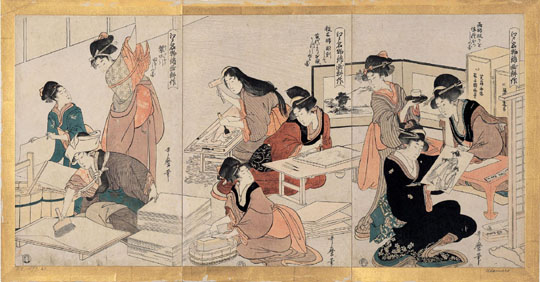The Ota Memorial Museum of Art, Tokyo, is currently hosting an exhibition of Edo Period (1603-1867) ukiyo-e woodblock prints from the Museum for Art and Craft Hamburg, Germany. The museum houses one of the finest ukiyo-e collections in Europe, and has lent 237 pieces from its 5,000 piece collection, including wood- block prints, drawings and illustrated woodcuts by master artists. The collection reflects the vision of the museum's founder, Justus Brinckmann (1843-1915), who established the space to provide the German public the opportunity to study the craftsmanship of ukiyo-e artists.
The term "ukiyo-e," which literally means "art of the floating world," reflects the transformation of the Buddhist belief that the world of human existence is both transitory and fleeting. What started as a religious ideology was transformed by the citizens of Edo (old Tokyo) into an aesthetic code that reveled in demonstrations of ephemeral beauty. The setting for ukiyo-e art is the world of Edoites' indulgences, including kabuki theaters, tea houses and the entertainment district.
Perhaps one of the best ways to learn about the world of ukiyo-e is to explore the women depicted in this art form. Two of the master artists appearing in this exhibition, Kitagawa Utamaro (ca.1753-1806) and Utagawa Hiroshige (1797-1858) — usually known simply as Hiroshige — have widely varying approaches to portraying the floating world.

















With your current subscription plan you can comment on stories. However, before writing your first comment, please create a display name in the Profile section of your subscriber account page.